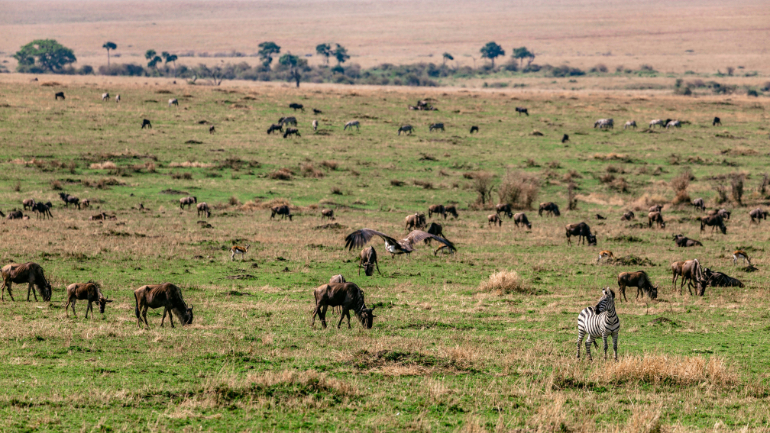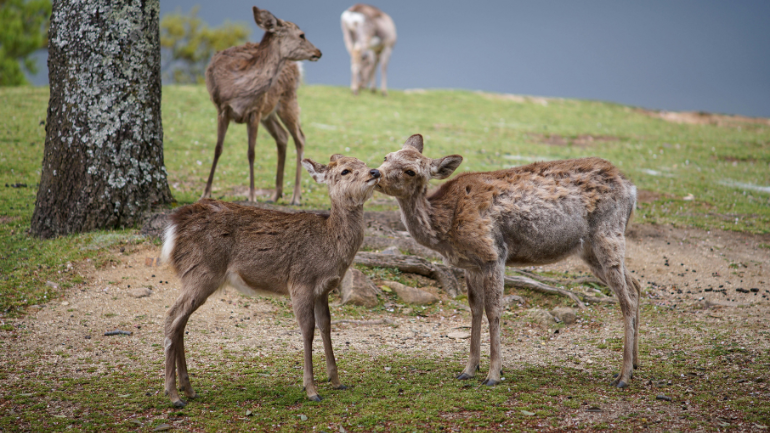Contents
- 1 UAE Conservation Biology Benefits
- 2 Fundamental Pressures and Drivers of Change in Biodiversity
- 3 Collaborative Commitment to Protect the Environment
- 4 Coastal Ecosystems Preservation
- 5 Habitats and Species Protection
- 6 UAE Sustainable Wildlife
- 7 National Red List Project
- 8 The Vital Bird Areas Program
- 9 UAE Natural Wonders
The UAE’s hot and dry climate significantly inhibits the country’s tremendous biodiversity, which needs UAE conservation biology efforts. The UAE contains three major types of ecosystems: desert ecosystems, which account for 80% of the country’s area; mountain ecosystems, which account for 2.6% of the country’s area; and coastal and marine ecosystems, which cover 2390 km of the Arabian Gulf and the Sea of Oman.
However, as a meeting point between the Indo-Asian and Afro-European regions, it has a relatively rich fauna and flora, with 731 plant species, 48 mammal species, 440 bird species, 40 varieties of coral reefs, 500 fish species, four turtle species, and many marine mammal species, 109 varieties of algae, and 67 amphibian and reptile species.
Read more: UAE Climatic Zones: Knowledge Portal to Dubai’s Weather
UAE Conservation Biology Benefits
Biodiversity conservation in the United Arab Emirates has numerous advantages. Biodiversity protection is critical to the UAE’s cultural legacy, including preserving the endangered Arab Falcon and camel diversification. Fisheries and tourism are crucial components of the UAE economy; these services seek to study the possibility of creating a local greener Emirate through a greater understanding of carbon and coastal ecosystem services and their potential contribution to climate change mitigation.
Invertebrates are abundant in the tidal rocky zone, particularly in creeks, with 2636 species documented and 15 spider kinds. In 2013, 22 proclaimed protected areas totalling 6841 km2, including 5 Ramsar Convention areas.
Fundamental Pressures and Drivers of Change in Biodiversity

The lack of arable land, invasive alien species, climate change, red tide occurrences, overgrazing, misuse of marine resources, water desalination, wastewater, and tourism severely impede biodiversity and marine conservation efforts. Furthermore, the attempt to grow agricultural land has resulted in the rapid depletion of underground aquifers, causing dramatic declines in water tables and substantial increases in soil and water salinity in some locations. Desertification is an increasing issue, and oil spills, particularly along the coast, severely contaminate certain areas.
Read more: UAE Climate Overview: A Pivotal Element of Sustainability and Policy
Collaborative Commitment to Protect the Environment
The UAE’s heritage includes diverse land and sea environments. The United Arab Emirates, like the United States, has a strong conservationist history. For decades, UAE organisations and environmental non-governmental charity have collaborated with environmental conservation groups in the United States and worldwide to restore habitats, protect endangered species, and preserve our planet.
Coastal Ecosystems Preservation
The UAE’s Ministry of Climate Change and Environment strives to conserve the local coastal and marine ecosystems by restoring coral reefs, cultivating mangroves, and constructing artificial caves. At COP26, the UAE vowed to plant 100 million mangrove plants by 2030, which will help collect carbon and safeguard coastal areas. By leading the Mangrove Alliance for Climate (MAC), the UAE has helped to facilitate mangrove recovery and create practical climate solutions. Since its inception at COP27, the MAC has grown to include 30 countries. This year’s COP28 in the UAE announced $186.6 million in additional nature and climate financing for forests, mangroves, and the ocean.
In 2023, the United Way of Collier the Keys and the UAE announced a collaboration to give essential funding of up to $50,000 to Reef Renewal USA in response to the Florida Keys’ rising coral bleaching problem. The money supports studies that remove bleaching-prone corals from their current environment and relocate them to deep water or land-based nurseries.
The UAE’s role in repairing the reef will extend well beyond the seafloor. Some funds are used to develop marine science teaching programs for children, such as a UAE-sponsored scholarship fund for Monroe County kids pursuing marine science degrees at state universities. Funds have been granted to establish a Coral Restoration Learning Exchange Program between the UAE and the Coral Restoration Consortium. Restoring coral reefs will also have a substantial economic impact in the Keys, where tourism is big business and the maritime industry employs more than half of the locals.
Read more: UAE Geography Facts: Intriguing Discoveries
Habitats and Species Protection

The UAE’s involvement with conservationists dates back decades. The Mohamed bin Zayed Species Conservation Fund, established in 2008, funds organisations worldwide that work with threatened plant and animal species. As of 2023, the Fund had distributed more than $24 million to over 2,500 conservation projects, including 42 in the United States. The fund has aided species ranging from gigantic sea bass off the coastlines of Mexico and California to “the mauka” plants indigenous to Hawaii. The world’s rarest duck, the Madagascar pochard, has taken a modest step away from extinction thanks to a Fund-supported conservation effort.
The UAE now boasts 7,500 of these gorgeous species thanks to decades of conservation efforts. Sir Bani Yas island has become a biodiversity hotspot, rich with wildlife and several million trees and plants. In 1997, the late Sheikh Zayed became the first head of state to receive the World Wildlife Fund’s Golden Panda Award for conservation efforts.
UAE Sustainable Wildlife

The sustainable wildlife program has three primary pillars that aim to ensure the country’s wildlife sustainability, improve public knowledge on biodiversity issues, and contribute to achieving international targets such as the Aichi Targets 2021 and the SDGs. There are three pillars:
- National Red List Project.
- The Vital Bird Areas Program.
- UAE Natural Wonders.
National Red List Project
The Sustainable Wildlife Initiative aims to publish a national Red List assessment and index of birds, mammals, amphibians, reptiles, and selected marine species such as sharks, rays, corals, and plants for the United Arab Emirates, based on the International Union of Conservation of Nature (IUCN) Red List methodology.
UAE National Red List of Mammals

The United Arab Emirates is home to various ecosystems, including terrestrial desert, mountain, marine, and coastal habitats, as well as 78 animal species (59 terrestrials and 19 marine). Twenty terrestrial species are listed below: Six are unconfirmed, ten are introduced, and four are feral, leaving 58 confirmed native species. There are no mammal species native to the UAE.
Still, one species, Arabian Tahr Arabitragus jayakari, is endemic to the Hajar Mountains of the UAE and Oman, and five species are endemic to the Arabian Peninsula: Arabian Oryx leucoryx, Arabian Gazellea Gazella Arabica, Arabian Sand Gazelle Gazella marica, Wagner’s Gerbil Gerbillus dasyurus, and Arabian Jird Merionesarimalius.
The Red List Index (RLI) revealed that while the UAE’s mammals are more threatened than the global average, the RLI has improved since 1996, mainly due to improvements in the status of three species due to direct conservation actions. This good tendency in RLI contrasts with a deteriorating trend globally.
Red List of Reptiles and Amphibians

The UAE has a diverse range of desert, mountain, and marine habitats, with 76 species of herpetofauna currently recorded, three of which (Hydrophis viperinus, Hemidactylus flaviviridis, and Chalcides ocellatusssp. ocellatus) are thought to be introduced, and one sea snake (Hemidactylus persicus) has no confirmed records in the UAE. Among the 72 confirmed species and subspecies in the UAE, one terrestrial species (Asaccus caudivolvulus) is now regarded endemic, 13 species are unique to the Hajar Mountain range shared with Oman, and 20 species are endemic to the Arabian Peninsula.
Of the 72 species of herpetofauna deemed native to the UAE, three (4.2%) were classified as Critically Endangered, nine (12.5%) as Vulnerable, one (1.4%) as Near Threatened, 50 (69.4%) as Least Concern, and nine (12.5%) as Data Deficient. Habitat loss is the most severe danger to terrestrial herpetofauna in the UAE.
Read more: Embark on a Discoverable Journey Through the UAE’s Geography and Climate
The Vital Bird Areas Program

The UAE has 30 Important Bird Areas (IBA) according to the Important Bird Area Inventory 2018. Identifying local and migratory bird sites in the country helps to conserve these species while increasing the percentage of eco-tourism. Birds are critical to biodiversity, and the government serves as a vital geographic hub for millions of migratory birds from Europe, Africa, and Asia.
Maintaining the UAE’s biodiversity and wildlife is one of the government’s primary responsibilities, accomplished through a comprehensive collection of regulations, procedures, research, and programs involving native and endangered animal and plant species.
Read more: UAE Climate and Renewable Energy: A Path towards Clean and Sustainable Future
UAE Natural Wonders

In line with the goal of its prudent leadership, the UAE has solidified its position on the world tourism map, with 16 million inbound tourists in 2017. Despite the country’s vast environmental resources, ecotourism must be utilised more. As part of its mandate, the Ministry of Climate Change and Environment (MOCCAE) launched a multi-phase national project dubbed ‘The UAE’s Natural Wonders’ to promote ecotourism across all seven emirates. MOCCAE has created a comprehensive collection of information materials, photographs, and videos for its first phase to raise awareness about the country’s 43 natural reserves.
Read more: UAE Climate and Tourism: A Perfect Blend of Nature and Adventure
What is the UAE doing to protect biodiversity?
The UAE is committed to maintaining and managing the country’s unique biodiversity and preventing threatened species from extinction. The establishment of natural reserves aims to improve the country’s ecology and safeguard its species, as well as to promote ecotourism.
What is the UAE doing to reduce its ecological footprint?
To lower its carbon footprint, the UAE monitors the release of gases that contribute to the greenhouse effect and has reduced per capita carbon emissions. Carbon dioxide (CO2) emissions per capita have dropped due to improved technology and the increased use of natural gas in power plants.
What are the Organizations that help preserve plant life in the UAE?
The Emirates Environmental Organization is a non-governmental professional working organisation based in Dubai, United Arab Emirates, created in 1991. Educating and encouraging future generations to care for the environment is critical to long-term growth.
Are the UAE’s wildlife conservation efforts to conserve species incredible?
The UAE’s wildlife conservation efforts to save species such as gazelles, houbara bustards, turtles, and even certain rare plants and other living organisms are fantastic and have made a significant difference worldwide, according to a top official.
UAE Conservation Biology is shaping the future. The UAE’s work in environmental monitoring and conservation programs, especially in Abu Dhabi’s marine habitats, is commendable. The Bachelor of Conservation Biology course degree is a testament to the United Arab Emirates’ commitment to wildlife preservation.













